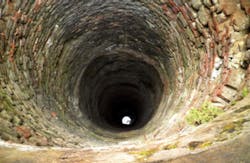Arsenic is a dangerous contaminant that has been found in several areas of the country, and those with well water are the most vulnerable to contamination. It is important that homeowners and dealers know if their area has a high occurrence of arsenic contamination so the correct testing and treatment can be done. The U.S. Geological Survey (USGS) has developed maps that show where and to what extent arsenic occurs in groundwater across the country, available at http://water.usgs.gov/nawqa/trace/arsenic/.
Arsenic appears in water as As (III), trivalent or non-oxidized arsenic, and As (V), pentavalent or oxidized arsenic. The most important step in testing for arsenic is determining which of the two forms are present, as As (V) is much easier to remove than As (III). A state-certified laboratory is the best resource to test a home well accurately for arsenic in water. Certified labs can be found at http://water.epa.gov/scitech/drinkingwater/labcert/statecertification.cfm.
There are a number of water treatment technologies that will remove arsenic, but many are not effective on As (III) and all have advantages and disadvantages that must be considered.
POU alumina or iron oxides are the simplest treatment methods for the home. Iron based POU systems will remove As (III) and As (V). Another way is to add some chlorine to oxidize it to As (V) before the POU treatment alumina or iron. Anion exchange is another possible cost effective whole-house treatment method, however, it does backwash concentrated arsenic to a drain, significantly lower the pH of the water and does not remove As (III).
Removing arsenic from water is not the easiest treatment out there. It requires many choices on the part of the homeowner and dealer when it comes to acceptable levels and testing frequency. POU is the best approach and a minor amount of system maintenance is required.
